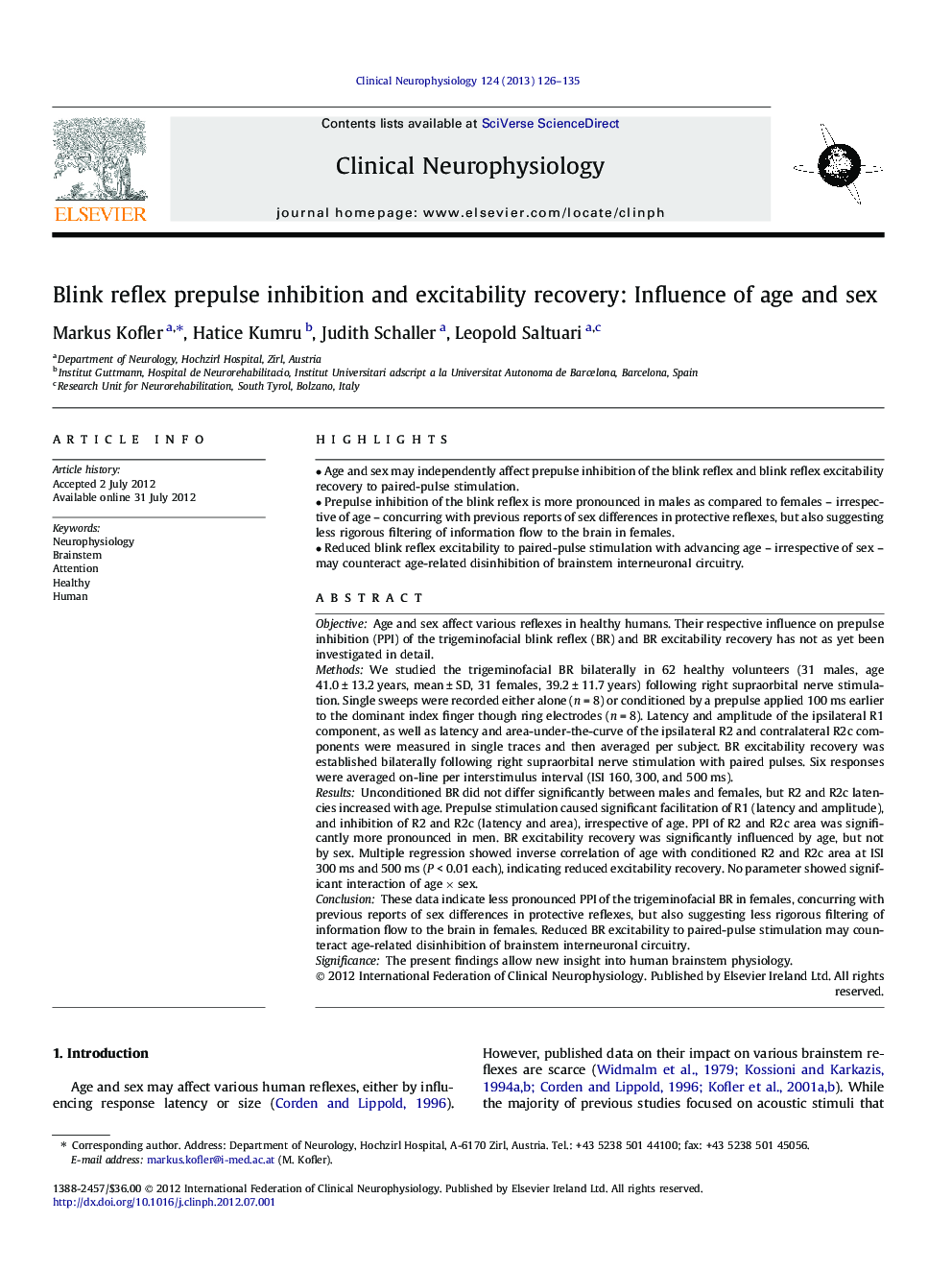| Article ID | Journal | Published Year | Pages | File Type |
|---|---|---|---|---|
| 3043042 | Clinical Neurophysiology | 2013 | 10 Pages |
ObjectiveAge and sex affect various reflexes in healthy humans. Their respective influence on prepulse inhibition (PPI) of the trigeminofacial blink reflex (BR) and BR excitability recovery has not as yet been investigated in detail.MethodsWe studied the trigeminofacial BR bilaterally in 62 healthy volunteers (31 males, age 41.0 ± 13.2 years, mean ± SD, 31 females, 39.2 ± 11.7 years) following right supraorbital nerve stimulation. Single sweeps were recorded either alone (n = 8) or conditioned by a prepulse applied 100 ms earlier to the dominant index finger though ring electrodes (n = 8). Latency and amplitude of the ipsilateral R1 component, as well as latency and area-under-the-curve of the ipsilateral R2 and contralateral R2c components were measured in single traces and then averaged per subject. BR excitability recovery was established bilaterally following right supraorbital nerve stimulation with paired pulses. Six responses were averaged on-line per interstimulus interval (ISI 160, 300, and 500 ms).ResultsUnconditioned BR did not differ significantly between males and females, but R2 and R2c latencies increased with age. Prepulse stimulation caused significant facilitation of R1 (latency and amplitude), and inhibition of R2 and R2c (latency and area), irrespective of age. PPI of R2 and R2c area was significantly more pronounced in men. BR excitability recovery was significantly influenced by age, but not by sex. Multiple regression showed inverse correlation of age with conditioned R2 and R2c area at ISI 300 ms and 500 ms (P < 0.01 each), indicating reduced excitability recovery. No parameter showed significant interaction of age × sex.ConclusionThese data indicate less pronounced PPI of the trigeminofacial BR in females, concurring with previous reports of sex differences in protective reflexes, but also suggesting less rigorous filtering of information flow to the brain in females. Reduced BR excitability to paired-pulse stimulation may counteract age-related disinhibition of brainstem interneuronal circuitry.SignificanceThe present findings allow new insight into human brainstem physiology.
► Age and sex may independently affect prepulse inhibition of the blink reflex and blink reflex excitability recovery to paired-pulse stimulation. ► Prepulse inhibition of the blink reflex is more pronounced in males as compared to females – irrespective of age – concurring with previous reports of sex differences in protective reflexes, but also suggesting less rigorous filtering of information flow to the brain in females. ► Reduced blink reflex excitability to paired-pulse stimulation with advancing age – irrespective of sex – may counteract age-related disinhibition of brainstem interneuronal circuitry.
